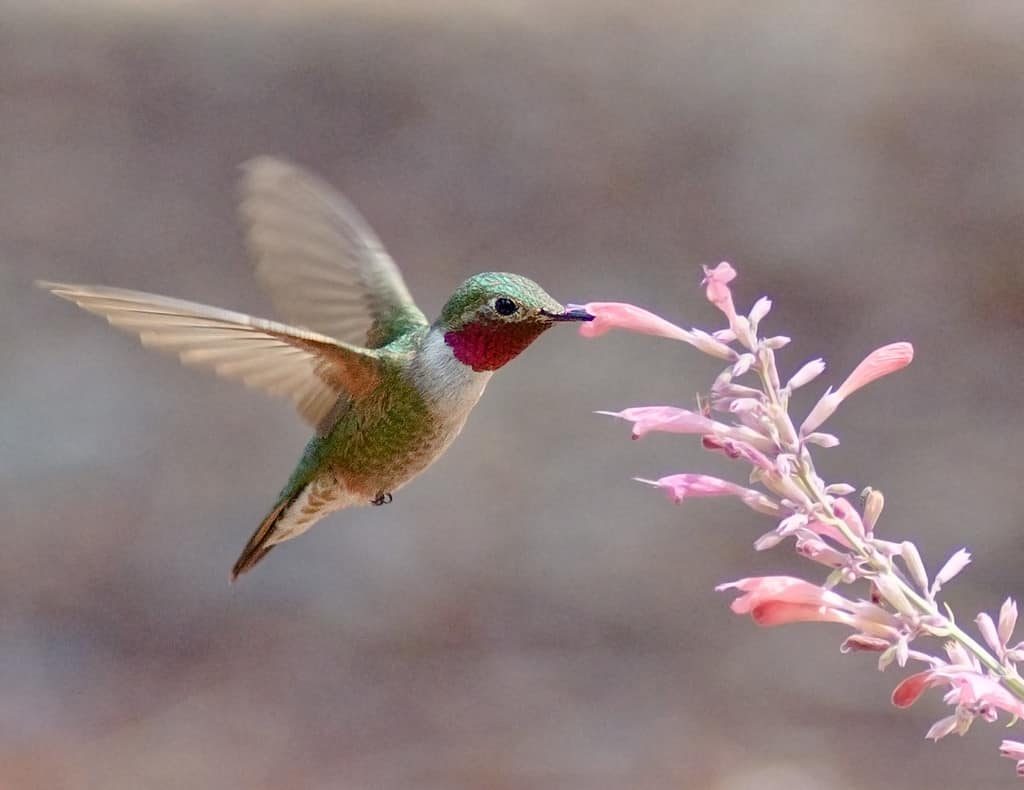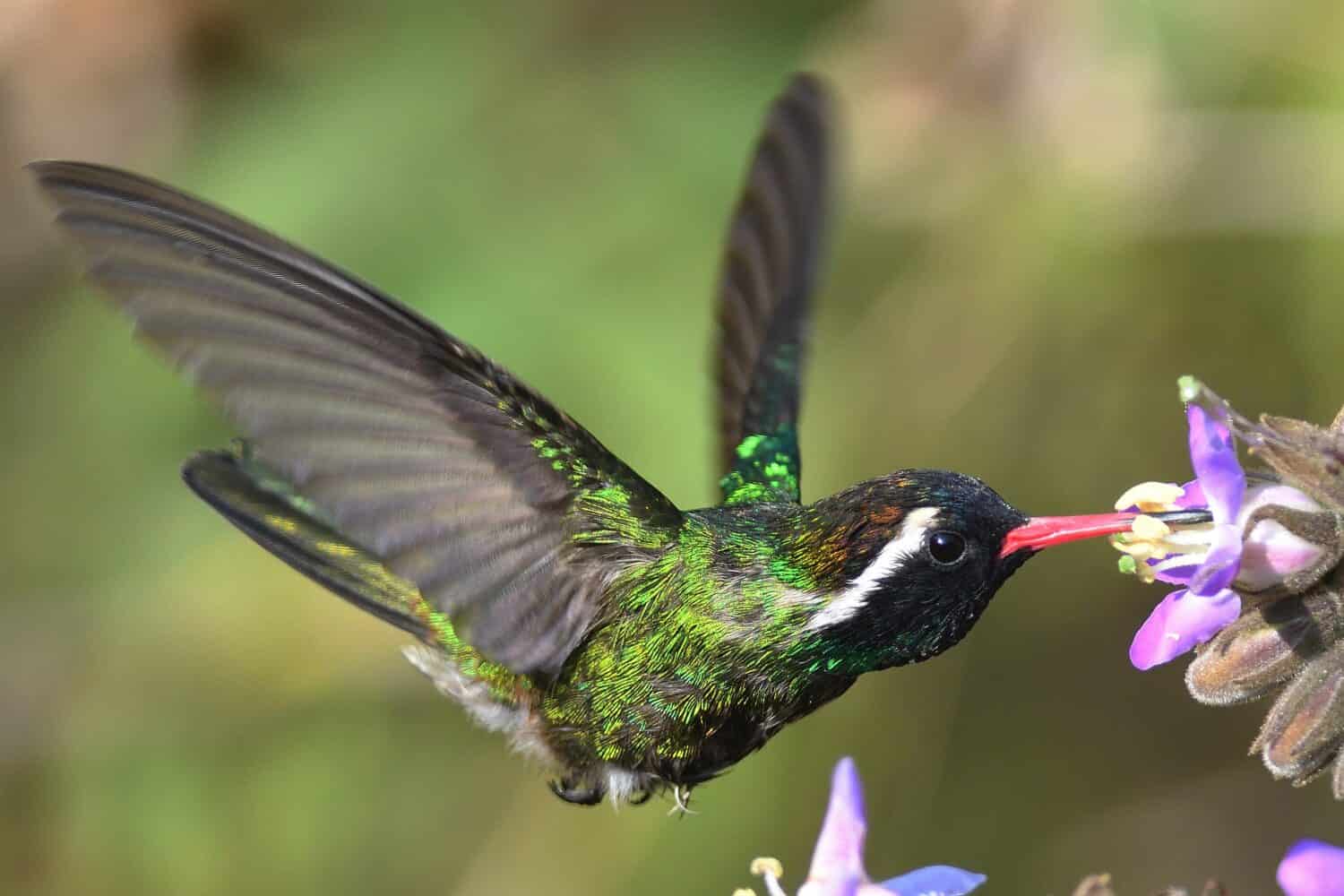Hummingbirds do not have unique songs like most birds. The littlest bird does make noise, but it does not sing like a songbird. But the voicebox of the hummingbird is tiny, and that prevents them from being able to make complex vocal sounds. Their small size and tiny voiceboxes do not stop the birds from making some noise.
In our quest to discover every sound the hummingbird makes, we discovered that most of the noises they produce are non-vocal. These unique birds create most of the sounds you hear when they are around using their wings, wing tips, and tail feathers.
Buzzes
If you sit close to a hummingbird feeder, you will hear them buzzing around. Sometimes, you hear them buzzing before you see them. Buzzing is one of the many sounds these birds make. While they are in flight or hovering, the flap of their wings creates the buzzing.
Hummingbird wings flap about 70 times per second. In one minute, they flap their wings about 4,000 times. The flapping helps them maintain their position, and the wind rushing through their feathers creates the sound.
Chip Notes

The birds make a single chip note when moving from flower to flower.
©M-C-C/iStock via Getty Images
As hummingbirds dash from flower to flower, they make a noise that is a little chirp sound. The chirp is called a chip note. They make the chip note when they are happy. Hummingbirds are very small and so active that they require a lot of nectar to fuel their bodies.
A hummingbird prefers to eat nectar from a flower rather than feed from the feeders. It is hard to imagine, but hummingbirds have brains that are large for their size. They can remember the location of every feeder and flower they have eaten from.
Anna’s Hummingbird Song
There are 330 species of hummingbirds. To discover every sound a hummingbird makes, you have to look at the birds as a whole and at each species. The Anna’s Hummingbird strings chip notes and buzz together to create a song that lasts up to 10 seconds.
This species of hummingbird is found along the Pacific Coast in California. Each bird weighs less than 0.16 ounces. They have a body length of three to four inches and a wingspan of 4.7 inches. The male birds can reach speeds of 61 mph when they are diving.
Hums

The air pressure differences between the top and bottom of their wings create their hum.
©Ramona Edwards/Shutterstock.com
When listening to every sound a hummingbird makes, you will notice that most species make a humming sound. The sound is not being emitted from their voicebox. The air pressure above and beneath their wings is making the noise.
The air pressure above their wings and the air pressure beneath the wings are different. When the bird flaps its wings, the magnitude of the pressure changes, creating the sound of a hum. All species of hummingbirds make this sound.
Cricket Sounds
The trill you recognize as the sound of cricket is also made by the broadtail hummingbird wings in flight. The sound can be very loud.
Other species of hummingbirds make trill sounds when their wing and tail feathers collide. The wingspans on these birds are normally longer than the bird, allowing the tips of their wing feathers to brush over their tail feathers.
Chirping and Chattering
Chirps and chattering are some of the sounds hummingbirds make. The little birds cannot make it difficult. Vocal sounds, but can make chirps. They make different chirping and chattering sounds depending on their reason for vocalization.
The main reasons for these birds to chirp or chatter are:
- To warn other birds that they are going to defend their territory
- When speaking to the young birds, the mother’s chirp
- Baby birds chirp to their mother at feeding time
- When they are trying to attract a mate
- When they find the food that they want.
The best way to discover every sound that a hummingbird makes is to establish a feeder near your home. Fill the feeder with hummingbird nectar. You can also plant flowers that will attract birds to your yard. When the hummingbirds start to visit your flowers or your feeder, spend time sitting close and listening. Before long, you will start to recognize the sound patterns of different birds and the reasons why some sounds are made.
Thank you for reading! Have some feedback for us? Contact the AZ Animals editorial team.








